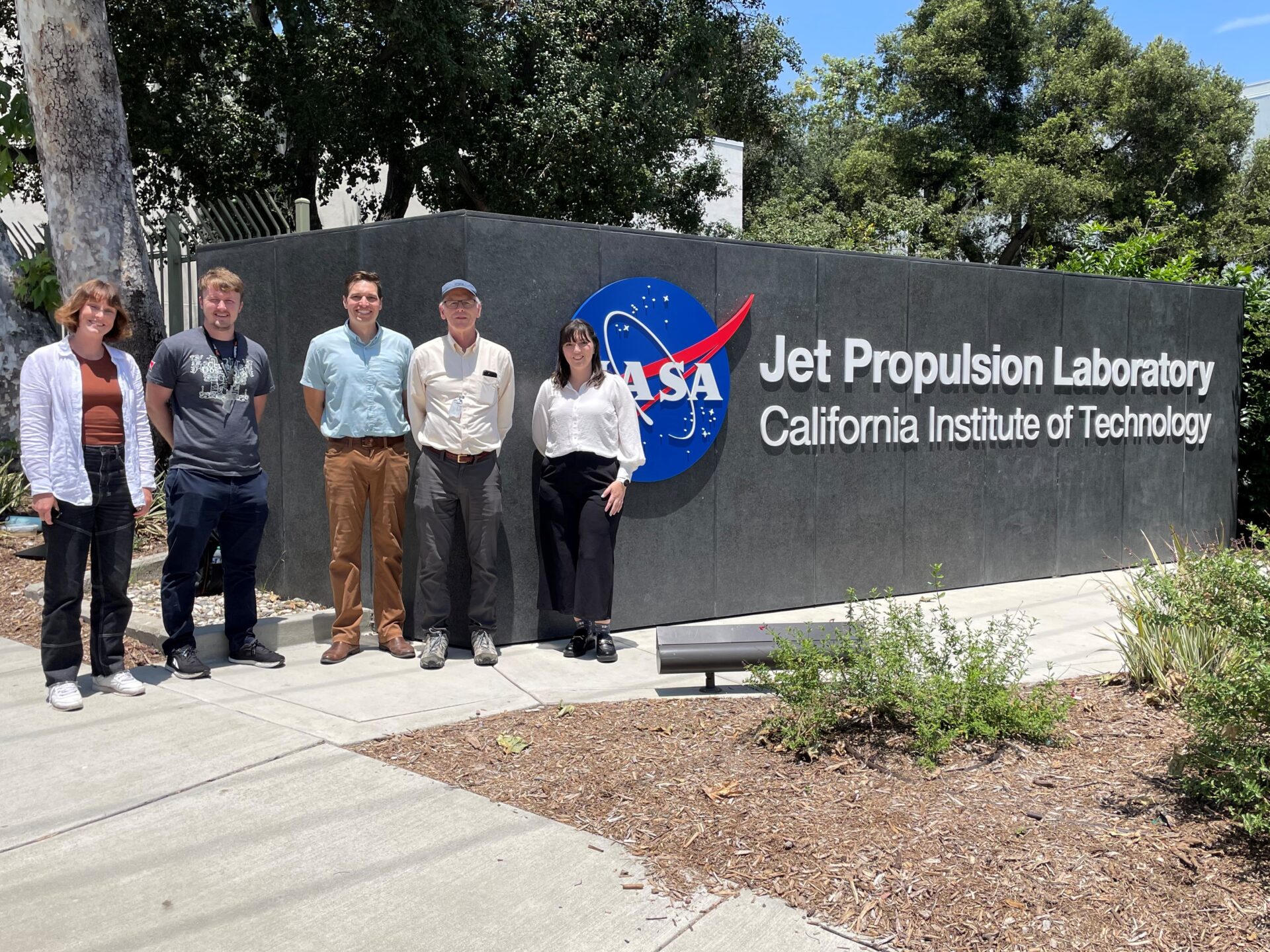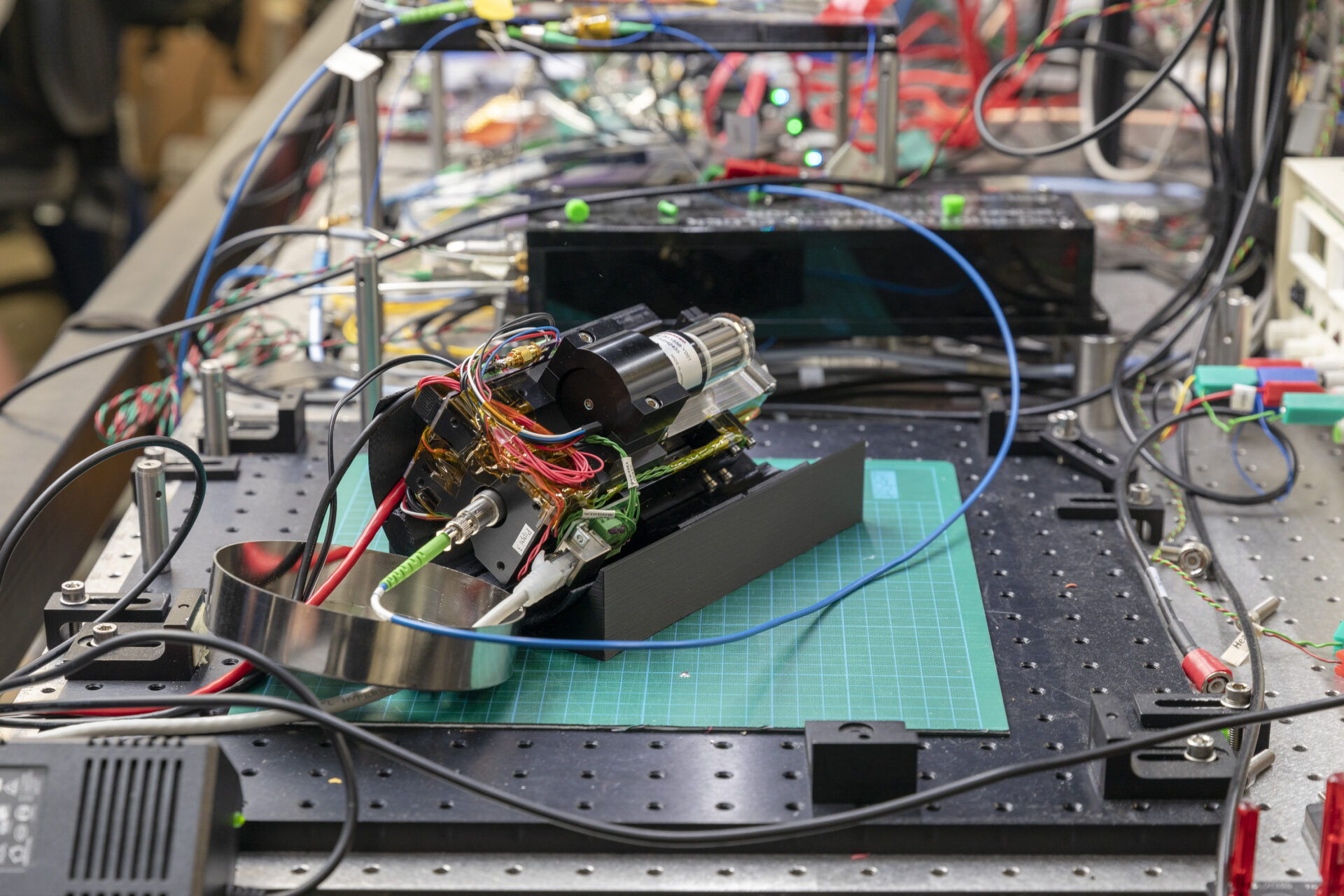This month, whilst overseas enjoying some annual leave, I took the opportunity to drop in on two of SmartSat’s rising star PhD candidates interning at NASA’s Jet Propulsion Laboratory (JPL) in sunny California. Anne Bettens from the University of Sydney and Emily Ahern from the University of Adelaide were paired with JPL mentors with expertise in their area of study.
 SmartSat JPL interns Anne Bettens (left) and Emily Ahern (right) with their mentors Deegan Atha, a robotics technologist in the Perception Systems Group, and Eric Burt, an atomic clock physicist for the Deep Space Atomic Clock mission, along with Chief Research Officer Dr Carl Seubert (centre).
SmartSat JPL interns Anne Bettens (left) and Emily Ahern (right) with their mentors Deegan Atha, a robotics technologist in the Perception Systems Group, and Eric Burt, an atomic clock physicist for the Deep Space Atomic Clock mission, along with Chief Research Officer Dr Carl Seubert (centre).
This internship program was created and funded by SmartSat with the aim to provide a blueprint for future internship opportunities with global space organisations and set our brightest PhD students on a trajectory of success in their space careers. Having previously worked at NASA JPL myself for almost a decade, it’s been an absolute thrill to offer this program and provide these students with a life-changing experience to learn from some of the greatest aerospace engineers and scientists in the world.
Amongst the list of applicants recently offered funding for the Australian Space Agency’s Moon to Mars Demonstrator Mission, we were thrilled to see SmartSat core partner QuantX Labs receive a $3.7 million grant to build a flight model of a compact clock and fly it in orbit with the intent to have an engineering model that could be demonstrated in space. This work explicitly builds on a two phase SmartSat funded project, Project P2.31: Compact Clock for Small Satellite Applications, a great example of technology progress maturation through government support.
 QuantX’s compact clock in development at their facilities at Lot Fourteen
QuantX’s compact clock in development at their facilities at Lot Fourteen
The University of Western Australia (UWA) also received $4.4M of funding to establish ‘TeraNet’, a three-node commercial optical communications ground station network. SmartSat has funded a two phased project (Project P1:18 Coherent Free-Space Optical Communications) with UWA to advance coherent optical communications technology for ground stations such as this. SmartSat partner Australian National University also received two grants, including one of which was for a SmartSat Professorial Chair of Precision Measurement in Space Kirk McKenzie, who received $6.2 million to develop laser stabilisation flight tech for next generation gravity sensing missions. Congratulations to all recipients on this fantastic opportunity to mature Australian technology.
This week’s Advanced Strategic Capabilities Accelerator (ASCA) Industry Briefing hosted by Interim Head, Professor Emily Hilder, provided an indication of what this exciting new program means for the future of innovative technology development for defence and Australian industry. During the webinar, Professor Hilder made specific mention of space in the context of “trusted autonomy across all domains – which includes space”. This is as expected, yet still promising for the Australian space sector and is explicitly aligned to the ambition and direction of SmartSat’s Scarlet Lab and our research portfolio. SmartSat will continue to support its partners in these pursuits to enable future capabilities for Defence.